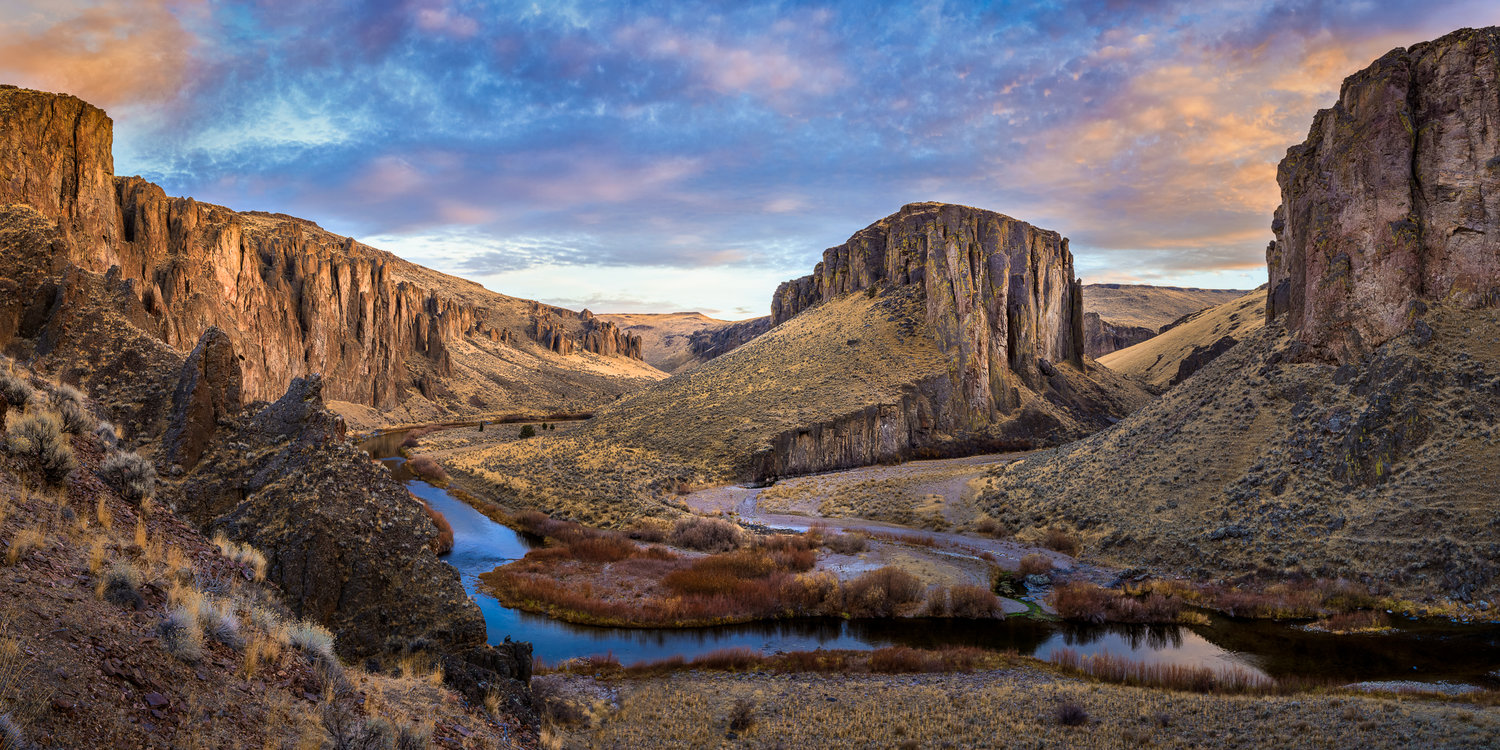A river runs through it
The Wild and Scenic West Little Owyhee River is a tributary of the Owyhee River. Nearly 6o miles long, the river is recognized for its remarkable scenery, wildlife, and opportunities for solitude and primitive recreation.
In 2022, we received a donation of a 120-acre parcel within the Drummond Basin that lies immediately upstream of the confluence of the West Little and mainstem Owyhee River. The property ranges in elevation from 4,065-4,476 feet. It is within the Owyhee River Canyon Wilderness Study Area (WSA), as well on the Oregon Desert Trail.

The West Little Owyhee Wild and Scenic River starts at 6,508 feet near the Nevada-Oregon border, east of McDermitt, Nevada. It flows east by Deer Flat and into Louse Canyon. Near a prominent feature known as Twin Buttes, it turns sharply north as it cuts through a small canyon, making its way to the Owyhee River.


There are stark contrasts between the inner canyon and the flat sagebrush plateau through which the river corridor runs. The Bureau of Land Management notes that the river offers many cool, clear secluded pools that are confined by sheer rock walls whose colorful, abstract beauty is the product of eons of erosion and weathering. Views from the canyon rim command a feeling of awe and wonder, as the river and its past are revealed in the rock strata that have been laid there by ancient volcanic activity.
Birds abound in this area. A collection of canyons host nesting sites for a wide variety of raptors, including several hawk species and golden eagles. Chukar and California quail frequent the rimrocks and talus slopes, and mourning doves visit during breeding season. Prairie falcons have a strong presence, while it’s common to also see Swainson’s, ferruginous and red-tailed hawks, as well as kestrels and northern harriers. Winter visitors include Canada geese, mallards, redheads, teals, scaups, mergansers and grebes.

The surrounding grounds have also been identified by US Fish and Wildlife as a Priority Area for Concern for greater sage-grouse. Several leks, or mating grounds, are in the area and sage-grouse live on adjacent benchlands amidst their mixed sagebrush habitat.
California bighorn sheep are particularly found in the vicinity of Toppin Creek Canyon, while pronghorn antelope, mule deer and white-tailed jackrabbits are among mammals that cross these canyonlands.

The property is also in the the vicinity of a rock shelter that was occupied by humans more than 11,000 years ago. Now an archaeological site, it was named the Dirty Shame Rockshelter because it was unfortunately pillaged repeatedly. The rock shelter is further evidence of the long-standing presence of the Northern Paiute people who have lived in the region for millennia.

Feature image by Devin Dahlgren: The West Owyhee can be seen in the foreground as its tributary, the West Little Owyhee, spills from another canyon.
Magic in full view
A piece of land along the West Little Owyhee River became a peaceful and creative place among friends.
Virtual fences mooove cows online
Virtual fence is a new technology that can help land managers maintain wildlife connectivity in permitted grazing areas.
Tribal Gatherings
Tribal leaders discussed the Native history and stewardship of their homelands at Trout Creek Ranch.
Research fueled by fire
Oregon State University finished 10 years of fieldwork on sage-grouse responses to wildfire.
Spring returns
Rod Klus returns to researching sage-grouse for Oregon Department of Fish and Wildlife.
Mountains of Research
Researchers spent a summer in the mountains and left with more than data.
Spreading wings in conservation
Jack Strang created new connections to the high desert during our first internship.
Neighbors helping neighbors fight fires
Rangeland Fire Protection Associations protect the high desert and each other.


















